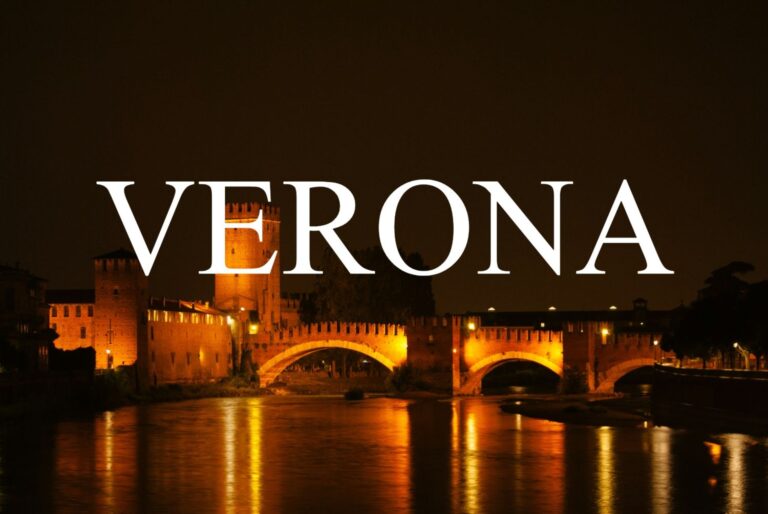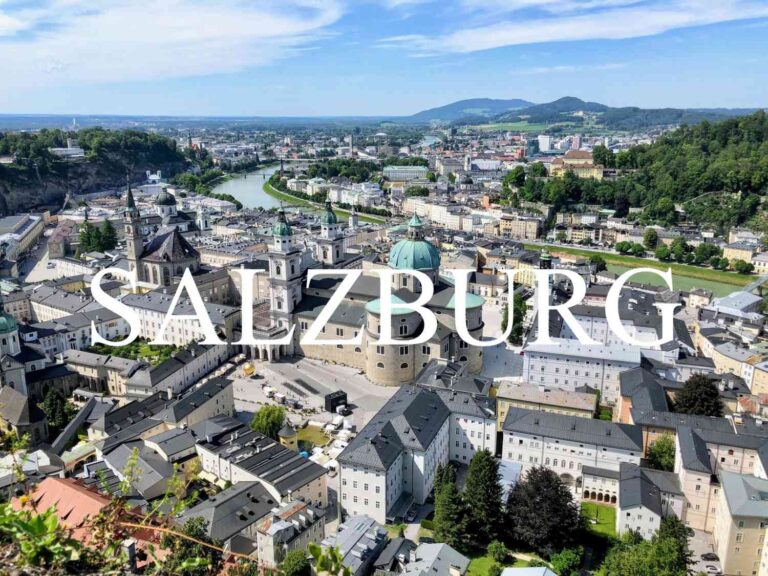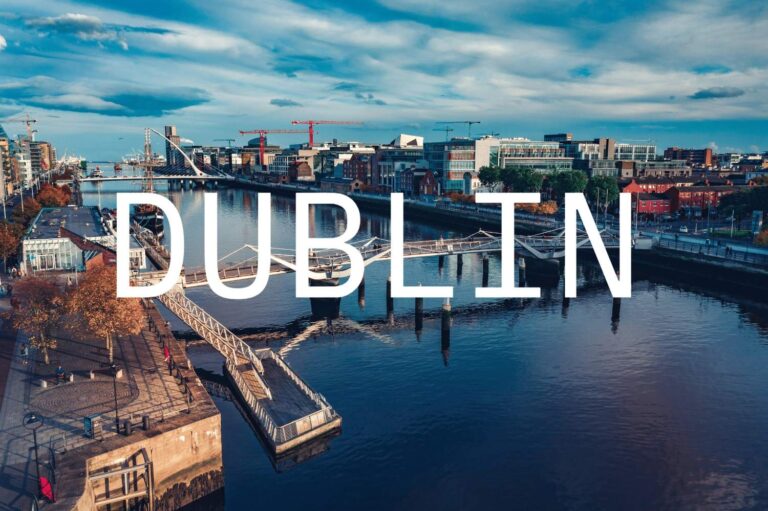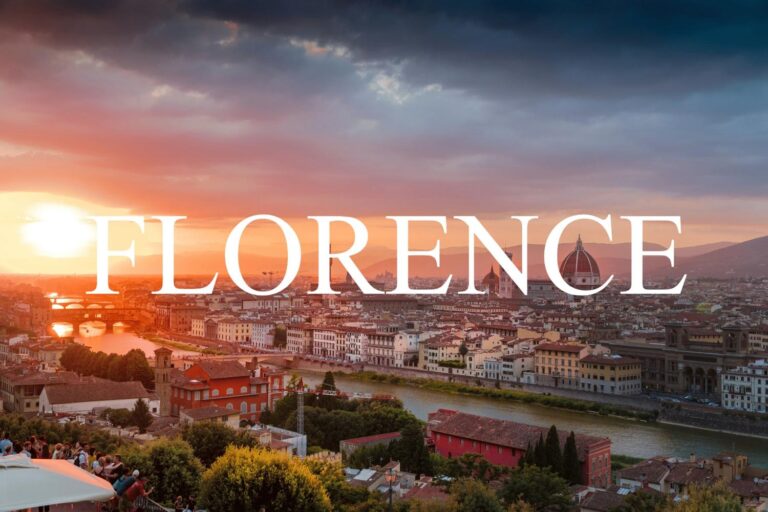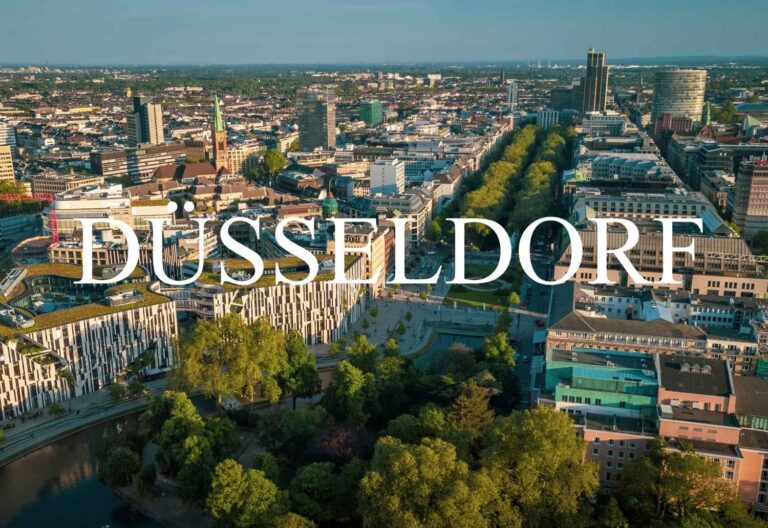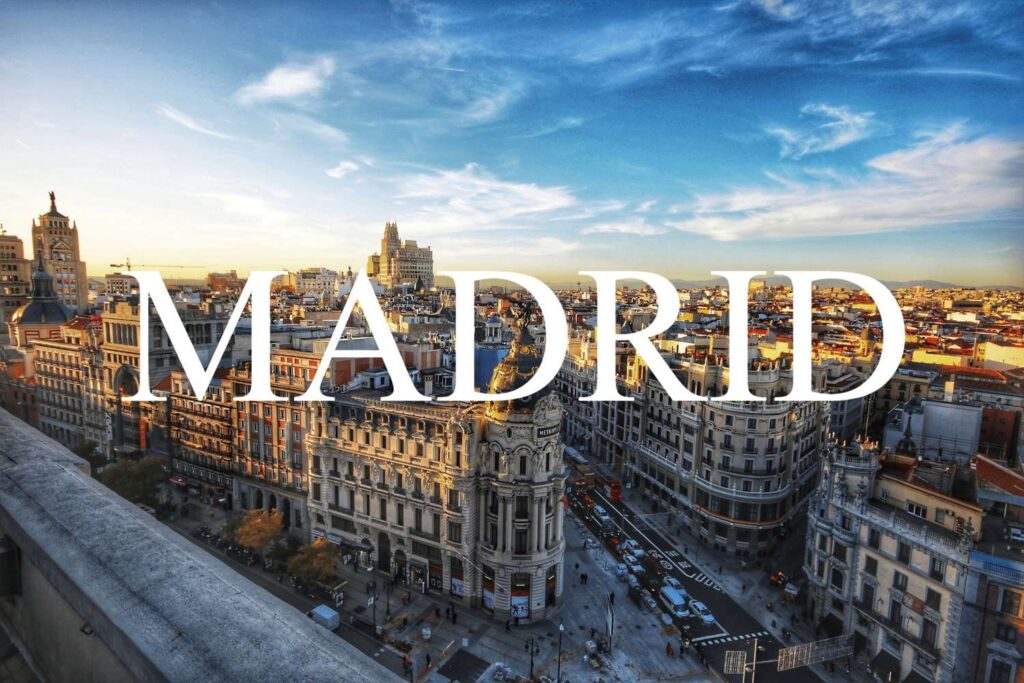
Madrid, the bustling capital of Spain, is a city where centuries of rich history harmoniously blend with modern energy and creativity. Renowned for its world-class art museums like the Prado and Reina Sofía, vibrant tapas bars, and lively plazas, Madrid invites travelers to immerse themselves in authentic Spanish culture. Wander through expansive parks such as Retiro, soak up the lively atmosphere of Gran Vía, and experience the passionate nightlife that makes the city come alive after sunset.
Whether you’re a history buff eager to explore majestic royal palaces, an art enthusiast drawn to masterpieces by Velázquez and Picasso, or a foodie craving traditional and innovative Spanish cuisine, Madrid offers a multifaceted adventure. Its warm, welcoming locals and charming neighborhoods create an inviting backdrop for unforgettable memories in Spain’s heart.
🏛️ Top Places to Visit in Madrid
The Prado Museum (Museo del Prado)
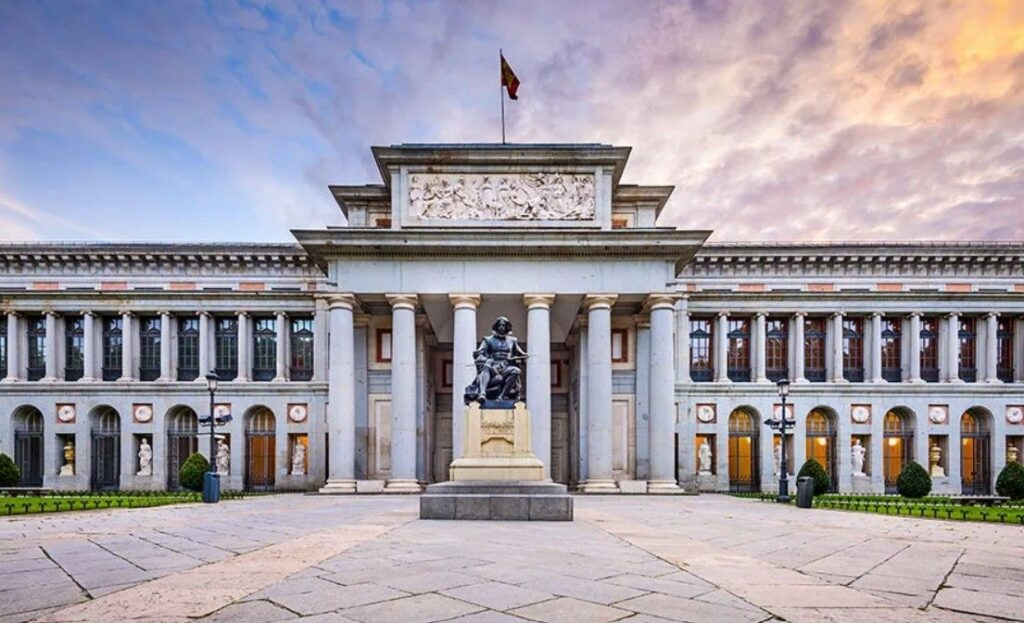
Located in the vibrant heart of Madrid, the Prado Museum (Museo del Prado) stands as one of the world’s premier art galleries, boasting an extraordinary collection of European art spanning the 12th to the 19th centuries. Known for its masterpieces by Spanish, Italian, and Flemish painters, the Prado is a cultural gem that attracts millions of visitors every year. Whether you’re an art aficionado or a curious traveler, exploring the Prado is a journey through centuries of creativity, history, and beauty.
🌟 Highlights of The Prado Museum
🖼️ Masterpieces by Legendary Artists
The Prado houses iconic works by renowned painters including:
- Diego Velázquez – Don’t miss Las Meninas, a masterpiece of Baroque art renowned for its complex composition and intriguing perspective.
- Francisco Goya – From his early royal portraits to haunting late works like Saturn Devouring His Son, Goya’s art tells a dramatic story of Spain’s history and psyche.
- El Greco – His elongated figures and vivid colors, like in The Nobleman with his Hand on his Chest, are deeply expressive.
- Titian and Rubens – These masters add Italian Renaissance and Flemish Baroque brilliance to the collection.
🏛️ Stunning Architecture & Layout
The museum itself is an architectural masterpiece, with a neoclassical façade designed by Juan de Villanueva in the late 18th century. Inside, spacious galleries are thoughtfully organized by country and period, making it easier to navigate the vast collection.
🎨 Diverse Collections
Beyond paintings, the Prado also features exquisite sculptures, decorative arts, and prints. Its vast holdings provide insight into European art history from medieval religious art to Romanticism.
📚 Educational Programs & Temporary Exhibitions
The Prado offers lectures, workshops, and special exhibitions throughout the year, making it an engaging destination for visitors of all ages.
🚶 How to Get There
• By Metro:
The closest metro stations are Banco de España and Atocha, both within a short walking distance.
• By Bus:
Several bus lines serve the area around the museum, including routes 10, 14, and 27.
• By Foot:
Located near Madrid’s bustling city center and Retiro Park, the museum is easily accessible on foot from many central points.
🕒 Visitor Information
• Opening Hours:
Typically open from 10:00 AM to 8:00 PM Tuesday through Saturday, and 10:00 AM to 7:00 PM on Sundays and holidays. Closed on Mondays.
• Admission:
General admission is affordable, with free entry during certain hours (usually evenings and Sundays). Booking tickets online is recommended to avoid lines.
• Time Needed:
Plan at least 2–4 hours to appreciate key works, though art lovers may want a full day to explore thoroughly.
💡 Travel Tips
• 🎟️ Book Tickets Online:
Reserve your entrance in advance, especially during peak seasons, to skip the queue.
• 🎧 Consider an Audio Guide or Tour:
These options provide rich context and stories behind the masterpieces, enhancing your experience.
• 👟 Wear Comfortable Shoes:
The Prado is extensive, so comfortable footwear is a must.
• 📸 Photography:
Non-flash photography is generally allowed, but check specific room rules.
The Prado Museum is a cultural jewel that captures the heart and soul of European art. Whether marveling at Velázquez’s intricate portraits or Goya’s powerful paintings, visitors are invited into a world of artistic mastery and historical depth. For anyone visiting Madrid, a trip to the Prado is not just a visit to a museum—it’s an inspiring encounter with centuries of creativity and passion.
Royal Palace of Madrid (Palacio Real)
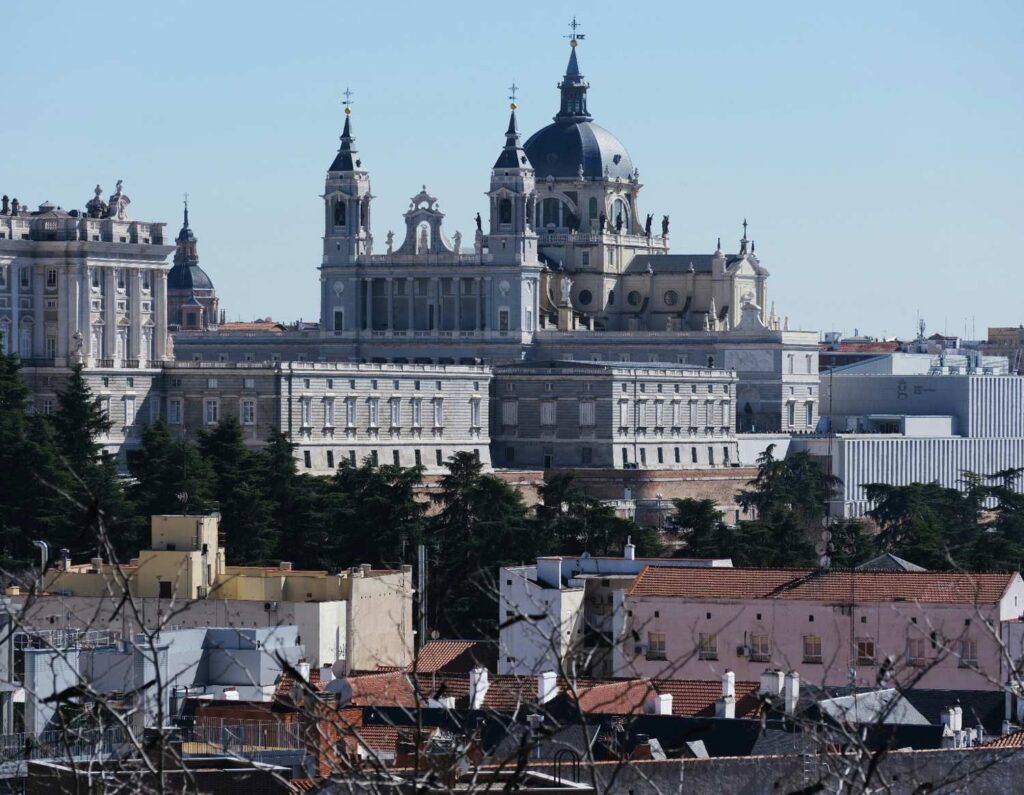
Photo by Dmitrii E. on Unsplash
Dominating the skyline of Madrid with its grand architecture and sprawling gardens, the Royal Palace of Madrid (Palacio Real) is one of Europe’s most impressive royal residences. Although it is no longer the official home of Spain’s royal family, this magnificent palace remains a symbol of Spanish heritage, history, and culture. Visitors flock here to admire its lavish interiors, priceless art collections, and beautifully manicured grounds—making it a must-see highlight of any trip to Madrid.
🌟 Highlights of the Royal Palace of Madrid
🏛️ Stunning Baroque Architecture
Built in the 18th century on the site of a former Moorish fortress, the Royal Palace showcases a striking blend of Baroque and Classical styles. Its vast façade features elegant columns, intricate carvings, and over 3,000 rooms filled with ornate details.
🎨 Richly Decorated Interiors
Inside, visitors can explore rooms adorned with frescoed ceilings, luxurious tapestries, and exquisite chandeliers. Highlights include the Throne Room, Hall of Mirrors, and the Royal Chapel, each showcasing the palace’s regal grandeur.
🖼️ Extensive Art Collection
The palace houses an impressive collection of artworks by masters such as Velázquez, Goya, and Caravaggio, alongside priceless antiques, porcelain, and royal armor.
🌿 Royal Gardens (Campo del Moro & Sabatini Gardens)
Stroll through the beautifully landscaped gardens surrounding the palace, including the romantic Campo del Moro park and the formal Sabatini Gardens, both perfect spots for relaxation and photography.
⚔️ Changing of the Guard Ceremony
Experience a traditional and colorful ceremony held regularly outside the palace, offering a glimpse into Spain’s royal customs and pageantry.
🚶 How to Get There
• By Metro:
The nearest metro stations are Ópera and Plaza de España, both within walking distance.
• By Bus:
Multiple bus lines serve the area, including routes 3, 25, and 39.
• By Foot:
The palace is centrally located, close to Madrid’s historic district and major tourist sites.
🕒 Visitor Information
• Opening Hours:
Generally open from 10:00 AM to 8:00 PM (April to September) and 10:00 AM to 6:00 PM (October to March). Closed on some holidays—check ahead.
• Admission:
Tickets can be purchased online or at the entrance. Reduced rates are available for EU residents and free entry for children under a certain age.
• Time Needed:
Plan around 2–3 hours to fully explore the palace and gardens.
💡 Travel Tips
• 🎟️ Book Tickets Online in Advance:
Avoid long queues by securing your entrance ahead of time.
• 🎧 Use an Audio Guide or Join a Guided Tour:
Learn about the history, architecture, and art with expert commentary.
• 👟 Wear Comfortable Shoes:
You’ll cover a lot of ground exploring vast rooms and gardens.
• 📸 Photography:
Non-flash photography is usually permitted in most areas—double-check specific restrictions.
The Royal Palace of Madrid is a dazzling testament to Spain’s royal heritage, offering visitors a unique peek into the opulent world of monarchy. From grand halls and priceless art to serene gardens and lively ceremonies, the palace invites you to step back in time and experience the splendor of Spanish history firsthand. Whether you’re an architecture lover, history buff, or simply curious traveler, the Palacio Real is an unmissable highlight of Madrid.
Retiro Park (Parque del Retiro)
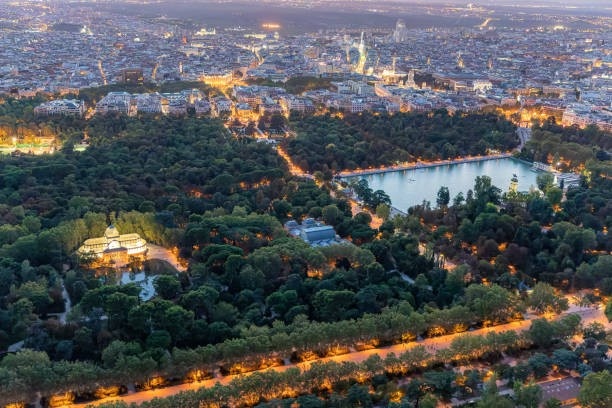
Nestled in the vibrant center of Madrid, Retiro Park (Parque del Retiro) is the city’s most beloved green space—a lush, sprawling oasis where locals and visitors alike escape the urban hustle. With its beautiful gardens, sparkling lakes, impressive monuments, and cultural events, the park offers a perfect blend of nature, history, and leisure. Whether you want to stroll under centuries-old trees, paddle on the lake, or simply soak up the sun, Retiro Park is a must-visit retreat in Madrid.
🌟 Highlights of Retiro Park
🚣 The Grand Estanque (Large Pond)
The park’s iconic centerpiece is the large artificial lake where you can rent rowboats for a peaceful paddle surrounded by trees and sculptures. It’s a perfect spot for relaxation and people-watching.
🏛️ Palacio de Cristal (Crystal Palace)
This stunning glass and iron structure, built in 1887, hosts contemporary art exhibitions and offers breathtaking reflections on the surrounding pond. Its light-filled interior and delicate design make it one of the park’s most photographed spots.
🌷 Beautiful Gardens and Green Spaces
Wander through themed gardens like the Rose Garden (La Rosaleda), bursting with colorful blooms in spring and summer, or relax under shady avenues lined with ancient trees.
🖼️ Cultural Attractions and Statues
Discover sculptures and monuments scattered throughout the park, including the Monument to Alfonso XII, a grand colonnade overlooking the pond, and several fountains and statues celebrating Spanish history and art.
🎭 Open-Air Events and Performances
Retiro frequently hosts concerts, art fairs, and street performances, especially during warmer months, adding a lively cultural vibe to your visit.
🚶 How to Get There
• By Metro:
Several metro stations provide easy access, including Retiro (Line 2) and Príncipe de Vergara (Lines 2 and 9).
• By Bus:
Multiple bus routes stop near the park’s entrances, making it accessible from many parts of Madrid.
• By Foot or Bike:
If you’re staying nearby, the park is perfect for a leisurely walk or bike ride.
🕒 Visitor Information
• Opening Hours:
Open daily from 6:00 AM to 10:00 PM (hours may vary seasonally).
• Admission:
Free entry to the park and most attractions, though some exhibitions at the Crystal Palace may charge a fee.
• Time Needed:
Allow at least 2 hours to enjoy a good walk and explore the main sights; a half-day or more is ideal for a deeper experience.
💡 Travel Tips
• 👟 Wear Comfortable Shoes:
The park covers over 125 hectares, so comfortable walking shoes are recommended.
• 🚣 Boat Rentals:
Rowboats at the Estanque are popular and can get busy on weekends—arrive early if you want to rent one.
• 🌞 Best Time to Visit:
Spring and early autumn offer mild weather and blooming flowers, but Retiro is beautiful year-round.
• 📸 Photo Opportunities:
The Crystal Palace and pond, tree-lined paths, and statues provide fantastic photo backdrops.
Retiro Park is more than just a park—it’s Madrid’s vibrant outdoor living room where history, nature, and culture meet. Whether you’re rowing across the serene lake, marveling at art inside the Crystal Palace, or simply lounging on a bench with a book, Retiro offers a peaceful yet lively escape right in the heart of the city. It’s a must-visit spot that captures the spirit of Madrid’s everyday life and natural beauty.
Puerta del Sol
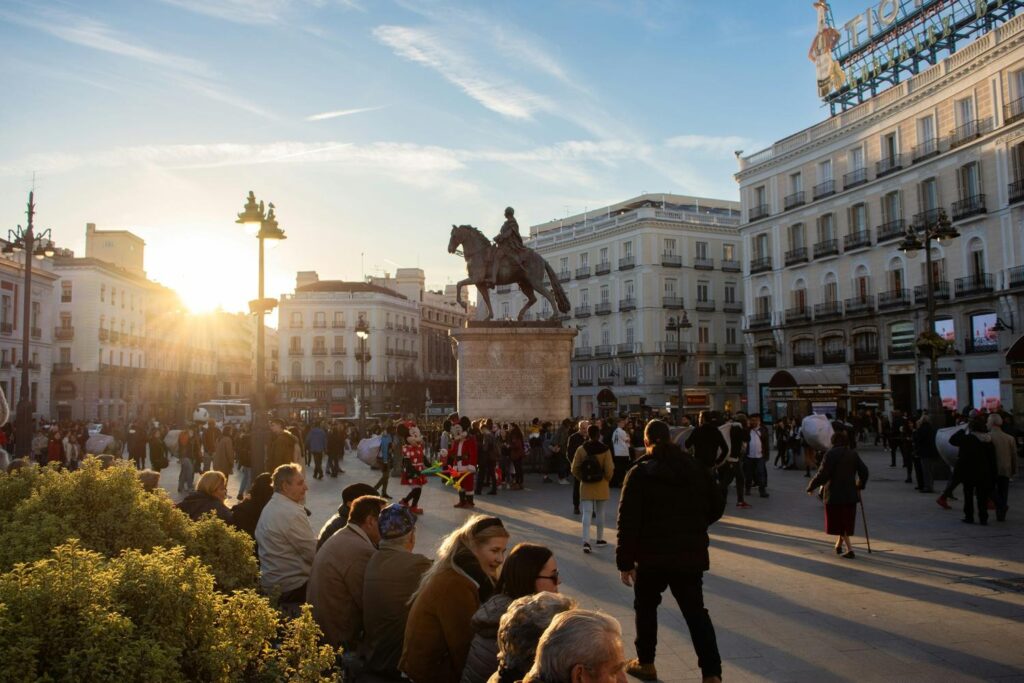
Photo by Alex Moliski on Unsplash
At the heart of Madrid lies Puerta del Sol, one of the city’s most iconic and busiest public squares. This vibrant plaza serves as a key meeting point, a cultural hotspot, and the symbolic “kilometer zero” from which all Spain’s roads are measured. With a lively atmosphere, historic monuments, shops, cafes, and street performers, Puerta del Sol captures the energy and spirit of Madrid like nowhere else.
🌟 Highlights of Puerta del Sol
🕰️ The Famous Clock Tower
The clock on the Real Casa de Correos building is world-famous for marking the countdown to the New Year in Spain. Thousands gather here every December 31st to ring in the new year with the traditional “twelve grapes” celebration.
🐻 The Bear and the Strawberry Tree Statue
This bronze statue, called El Oso y el Madroño, is the symbol of Madrid. Located prominently in the square, it’s a popular meeting spot and photo opportunity.
🚏 Kilometer Zero Marker
Puerta del Sol is the official “kilometer zero” point for Spain’s road network, marked on the pavement. This makes it the geographic and symbolic center of the country.
🛍️ Shopping and Dining
Surrounded by lively streets filled with shops, restaurants, and cafés, Puerta del Sol is a great place to explore local boutiques, grab a coffee, or enjoy traditional tapas.
🎭 Street Performers and Events
The square often hosts musicians, performers, and cultural events, making it a vibrant place full of life day and night.
🚶 How to Get There
• By Metro:
Puerta del Sol station is served by Lines 1, 2, and 3, making it one of Madrid’s best-connected locations.
• By Bus:
Many bus routes stop near the square, linking it easily to the rest of the city.
• On Foot:
Its central location makes it easy to reach from nearby neighborhoods and attractions.
🕒 Visitor Information
• Best Time to Visit:
Puerta del Sol is lively all year round, but evenings and weekends bring extra energy with street performances and bustling crowds.
• Safety Tips:
While generally safe, keep an eye on your belongings, as the area can get crowded.
• Time Needed:
You can enjoy a quick visit in 30 minutes or spend hours soaking in the atmosphere and exploring nearby streets.
💡 Travel Tips
• 👟 Comfortable Shoes Recommended:
The square and surrounding streets are pedestrian-friendly and great for walking.
• 📸 Photo Tips:
Capture the bear statue and the clock tower for iconic Madrid shots.
• 🛍️ Shopping:
Explore nearby Calle Preciados and Calle del Carmen for great shopping options.
Puerta del Sol is more than just a square—it’s the vibrant pulse of Madrid. Whether you’re here to witness the famous clock, shop, or simply people-watch, the energy and charm of this iconic spot embody the heart of Spain’s capital. A visit to Madrid isn’t complete without experiencing the lively spirit of Puerta del Sol.
Gran Vía
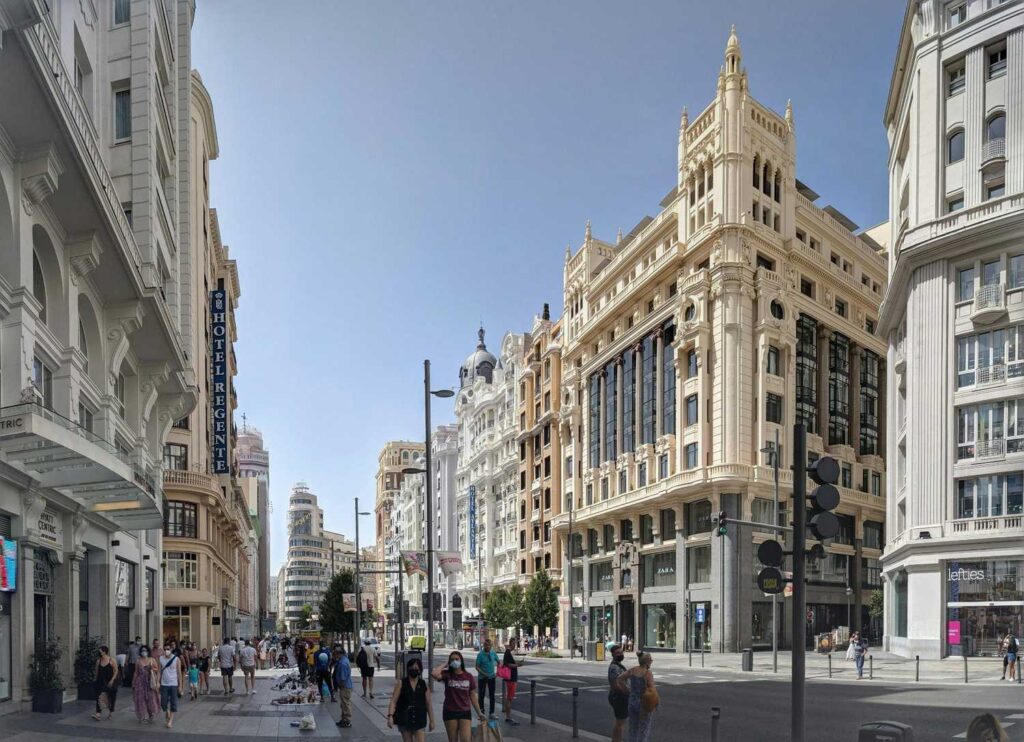
Photo by Gregor Schram on Unsplash
Gran Vía is Madrid’s bustling main artery, famous for its lively atmosphere, dazzling architecture, and endless entertainment options. Known as the “Spanish Broadway,” this vibrant street is a must-visit for anyone wanting to experience the city’s shopping, theaters, cinemas, and nightlife all in one energetic spot. Whether you’re hunting for the latest fashion, catching a musical, or enjoying tapas at a lively bar, Gran Vía delivers an unforgettable Madrid experience.
🌟 Highlights of Gran Vía
🏛️ Stunning Architecture
Gran Vía is lined with early 20th-century buildings showcasing Art Deco, Plateresque, and Neo-Mudéjar styles. Iconic landmarks like the Edificio Telefónica and Edificio Capitol give the street its unique skyline.
🛍️ Premier Shopping Destination
From high-street brands to luxury boutiques, Gran Vía offers an impressive range of shops. Popular stores include Zara, Primark, and El Corte Inglés, making it a shopper’s paradise.
🎭 Theaters and Cinemas
Often called Madrid’s theater district, Gran Vía hosts numerous venues featuring musicals, plays, and films. Catch a live show at the famous Teatro Lope de Vega or enjoy the latest movies at historic cinemas.
🍸 Vibrant Bars and Restaurants
After shopping or a show, unwind at one of the many tapas bars, rooftop terraces, or chic restaurants that line the street. The nightlife here buzzes well into the early hours.
📸 Photo Opportunities
The colorful neon signs, historic facades, and bustling crowds make Gran Vía a favorite for photographers and Instagrammers.
🚶 How to Get There
• By Metro:
Several metro stations serve Gran Vía, including Gran Vía (Lines 1 & 5) and Callao (Lines 3 & 5).
• By Bus:
Numerous bus routes run along or near the street, offering convenient access.
• On Foot:
Gran Vía is centrally located and easily walkable from Puerta del Sol, Plaza Mayor, and other central Madrid spots.
🕒 Visitor Information
• Best Time to Visit:
Gran Vía is lively all day, but evenings offer the best vibe with lit-up signs and bustling nightlife.
• Time Needed:
Spend at least a couple of hours exploring shops, theaters, and dining spots; a full day lets you experience it all.
💡 Travel Tips
• 👟 Wear Comfortable Shoes:
The street is busy and best enjoyed on foot.
• 🎟️ Book Theater Tickets in Advance:
Popular shows can sell out quickly, especially on weekends.
• 🍽️ Try a Rooftop Bar:
For stunning city views and cocktails, check out rooftop terraces like those at Círculo de Bellas Artes nearby.
Gran Vía pulses with the energy of Madrid—offering world-class shopping, top-notch entertainment, and unforgettable nightlife. Whether you’re exploring its iconic architecture or soaking up the city buzz from a rooftop bar, Gran Vía is where Madrid comes alive. Don’t miss this dynamic street on your next trip!
Plaza Mayor
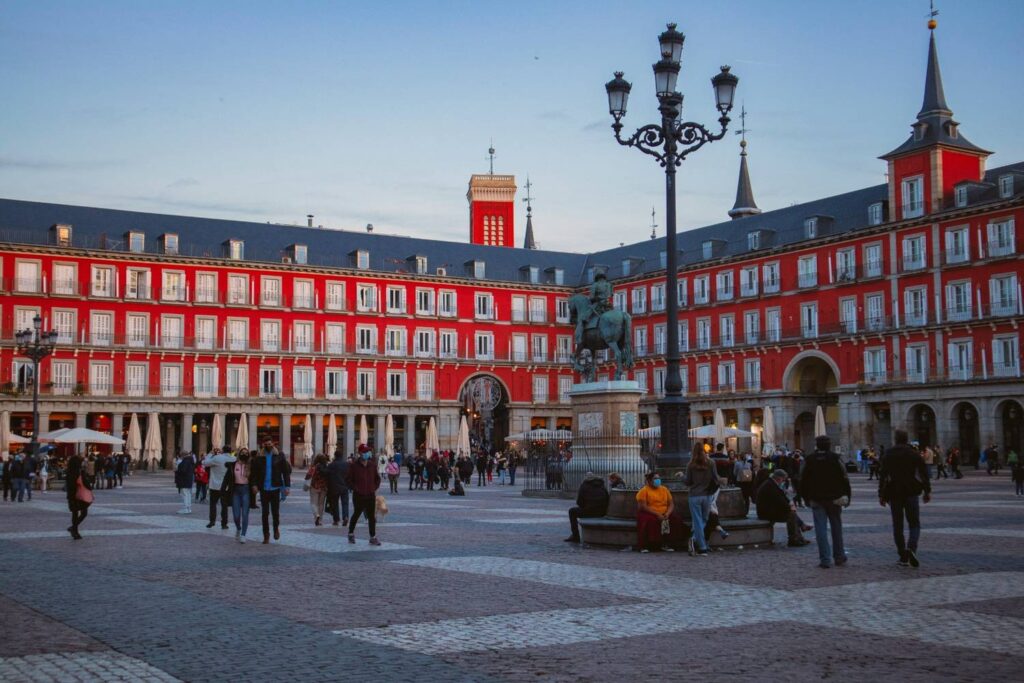
Photo by Eduardo Rodriguez on Unsplash
Located in the heart of Madrid’s old town, Plaza Mayor is one of the city’s most iconic and enchanting public squares. With its perfectly symmetrical architecture, vibrant history, and lively atmosphere, this majestic plaza has been the stage for countless events—from royal ceremonies and markets to festivals and bullfights. Today, Plaza Mayor is a must-visit spot where visitors can soak up authentic Madrid culture, enjoy local cuisine, and admire stunning architecture.
🌟 Highlights of Plaza Mayor
🏰 Stunning Architecture and Design
Built during the Habsburg era in the early 17th century, Plaza Mayor features elegant three-story residential buildings with distinctive red façades, wrought-iron balconies, and 237 arches surrounding the square. The uniformity and scale of the design create a breathtaking, harmonious space.
👑 Casa de la Panadería (Bakery House)
Dominating one side of the square, this historic building is easily recognizable by its colorful frescoes depicting mythological figures and symbols. Originally the city’s main bakery, today it often hosts exhibitions and cultural events.
🎭 A Hub of Events and Festivals
Plaza Mayor has been a site for everything from royal coronations and public executions to lively markets and street performances. Today, it hosts concerts, traditional festivals like the Christmas Market, and open-air theater performances that keep the square buzzing year-round.
🍽️ Outdoor Cafés and Traditional Cuisine
The plaza is surrounded by numerous cafés and restaurants with outdoor seating, perfect for enjoying classic Spanish dishes like tapas, jamón ibérico, and calamares a la romana (fried squid rings) while watching the world go by.
📸 Perfect Photo Spot
The uniform architecture, historic lampposts, and lively street performers make Plaza Mayor a favorite for photographers capturing the essence of Madrid’s old city charm.
🚶 How to Get There
• By Metro:
The closest metro station is Sol (Lines 1, 2, and 3), just a short walk away.
• By Bus:
Several bus lines stop near Plaza Mayor, connecting it well with other parts of Madrid.
• On Foot:
Its central location makes it easily walkable from nearby attractions such as Puerta del Sol and the Royal Palace.
🕒 Visitor Information
• Opening Hours:
The plaza is open to the public 24/7, but shops and restaurants have varying hours, typically 10 AM to 11 PM.
• Best Time to Visit:
Early mornings or late afternoons offer fewer crowds and softer light for photos. The festive atmosphere during holidays is especially charming.
• Time Needed:
Spend at least 1-2 hours here to stroll, dine, shop for souvenirs, and soak up the atmosphere.
💡 Travel Tips
• 👟 Wear Comfortable Shoes:
The plaza’s cobblestone surface can be uneven, so sturdy footwear is recommended.
• 🛍️ Browse Local Shops:
Discover artisan crafts, traditional ceramics, and souvenirs in nearby boutiques and market stalls.
• 📅 Check Event Schedules:
Look out for seasonal events like the Christmas Market or cultural festivals for a unique experience.
Plaza Mayor is the beating heart of Madrid’s historic center, combining centuries of history with a vibrant, welcoming atmosphere. Whether you’re sipping coffee at an outdoor café, exploring the striking architecture, or joining in a lively festival, Plaza Mayor invites you to experience the true spirit of Madrid. It’s a timeless spot where the city’s past and present beautifully intertwine.
Thyssen-Bornemisza Museum

Located just a short walk from the famous Prado Museum, the Thyssen-Bornemisza Museum is a world-class art gallery that complements Madrid’s “Golden Triangle of Art.” Renowned for its diverse and impressive collection, this museum showcases a broad spectrum of Western art from the Middle Ages to the late 20th century. Whether you’re an art aficionado or a casual visitor, the Thyssen offers a fascinating journey through styles, periods, and masters.
🌟 Highlights of the Thyssen-Bornemisza Museum
🖼️ Vast and Diverse Collection
The museum houses over 1,600 works, spanning more than seven centuries. From Renaissance and Baroque masterpieces to Impressionism and Pop Art, the collection features celebrated artists such as Caravaggio, Van Gogh, Monet, Rubens, and Picasso.
🏛️ Historical Palace Setting
Housed in the stunning Villahermosa Palace, the museum combines exquisite architecture with its impressive art, offering visitors an elegant and inspiring atmosphere.
🎨 Unique Thematic Exhibitions
The Thyssen often hosts temporary exhibitions focusing on specific artists, styles, or art movements, adding fresh perspectives to its permanent collection.
👓 Educational Programs and Guided Tours
For those interested in deeper knowledge, the museum offers guided tours, workshops, and audio guides that enhance the visitor experience.
🚶 How to Get There
• By Metro:
The closest stations are Banco de España (Line 2) and Atocha (Line 1), both within easy walking distance.
• By Bus:
Multiple bus lines stop near the museum, connecting it to different parts of Madrid.
• On Foot:
Located on the famous Paseo del Prado, it’s an enjoyable walk from other art institutions like the Prado and Reina Sofía museums.
🕒 Visitor Information
• Opening Hours:
Typically open Tuesday to Sunday, from 10 AM to 7 PM (check the official website for current times).
• Closed:
Usually closed on Mondays and some public holidays.
• Tickets:
Purchase tickets online in advance to avoid queues. Discounts are available for students, seniors, and groups.
• Time Needed:
Plan at least 2–3 hours to explore the collection comfortably.
💡 Travel Tips
• 🎟️ Buy Combo Tickets:
Consider a combined ticket for the Thyssen, Prado, and Reina Sofía museums to save money and time.
• 📷 Photography:
Photography is generally not allowed inside the galleries, so be sure to check specific rules.
• 🎧 Use Audio Guides:
Available in multiple languages, these guides provide rich context and interesting stories behind key works.
The Thyssen-Bornemisza Museum is a must-see for anyone exploring Madrid’s art scene. Its extraordinary range of artworks and elegant setting provide an enriching cultural experience that complements the city’s other art treasures. Whether you’re admiring classic masterpieces or modern innovations, the Thyssen invites you to dive into the vibrant history of Western art.
Santiago Bernabéu Stadium
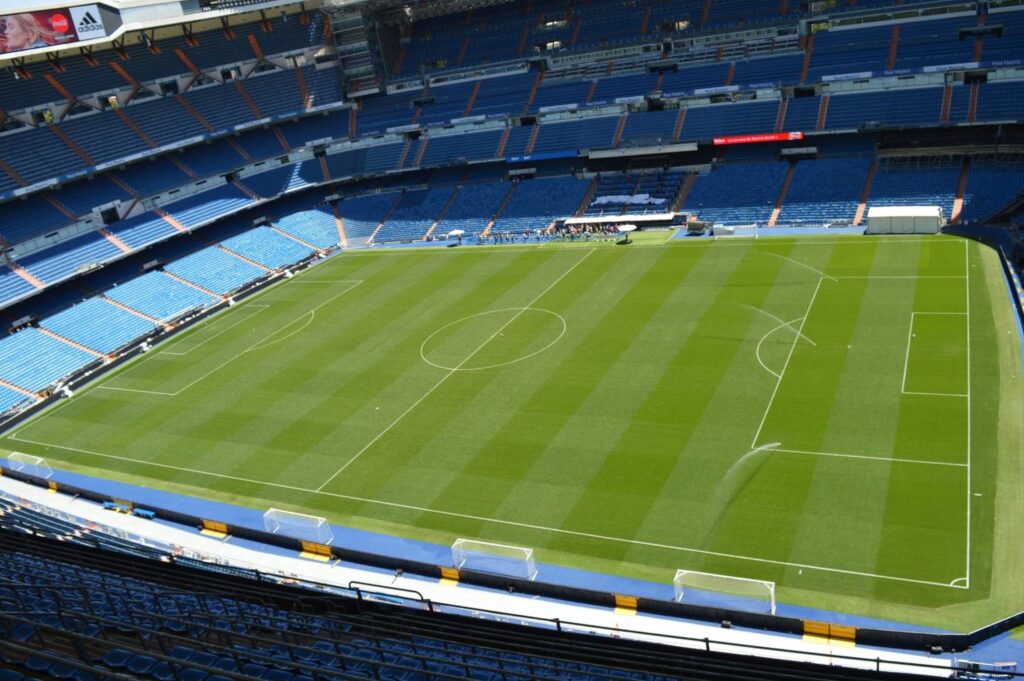
Photo by Joshi Milestoner on Unsplash
Located in the vibrant city of Madrid, the Santiago Bernabéu Stadium is a legendary football arena and the proud home of Real Madrid CF. Since its opening in 1947, this iconic stadium has witnessed some of the most thrilling moments in football history. Known for its electric atmosphere and passionate fans, the Bernabéu is more than just a sports venue—it’s a cultural landmark and a must-visit for any football enthusiast.
🌟 Highlights of Santiago Bernabéu Stadium
🏟️ Historic Football Icon
Named after Santiago Bernabéu, the visionary club president who helped shape Real Madrid’s legacy, the stadium holds a capacity of around 81,000 spectators. It has hosted numerous unforgettable matches, including Champions League finals and the world-famous El Clásico clashes against FC Barcelona.
⚡ Ongoing Modern Renovations
Currently undergoing major upgrades, the stadium is being transformed with state-of-the-art facilities, improved seating, and a retractable roof to enhance fan experience and comfort while preserving its rich heritage.
🎟️ Guided Tours and Museum Experience
Visitors can take guided tours through the stadium, exploring the trophy room, players’ locker rooms, and the pitch itself. The onsite Real Madrid Museum showcases the club’s extraordinary history and its countless trophies.
🚶 How to Get There
• By Metro: Santiago Bernabéu station (Line 10) is right next to the stadium, making access easy and convenient.
• By Bus: Several bus lines connect the stadium to different parts of Madrid.
• On Foot: Located in the Chamartín district, it’s a pleasant walk from nearby neighborhoods and hotels.
🕒 Visitor Information
• Match Days: Check the official Real Madrid website for schedules and ticket availability.
• Tour Hours: Stadium tours typically run daily, with varying hours—best to book tickets in advance online.
• Ticket Tips: Buy tickets early, especially for big games, and consider combo packages that include tours and museum entry.
💡 Travel Tips
• 🎫 Book Ahead: Popular matches and tours sell out fast—secure your spot early.
• 📸 Capture the Moment: Photography is allowed in most areas during tours—perfect for memorable shots.
• 🎧 Audio Guides Available: Enhance your visit with audio guides offering fascinating stories about the club’s history and legends.
The Santiago Bernabéu Stadium is a pilgrimage site for football fans worldwide. Its blend of historic grandeur and modern innovation makes it a must-see destination in Madrid. Whether you’re cheering during a match or exploring the stadium on a tour, the Bernabéu offers an unforgettable experience steeped in football passion and tradition.
Temple of Debod
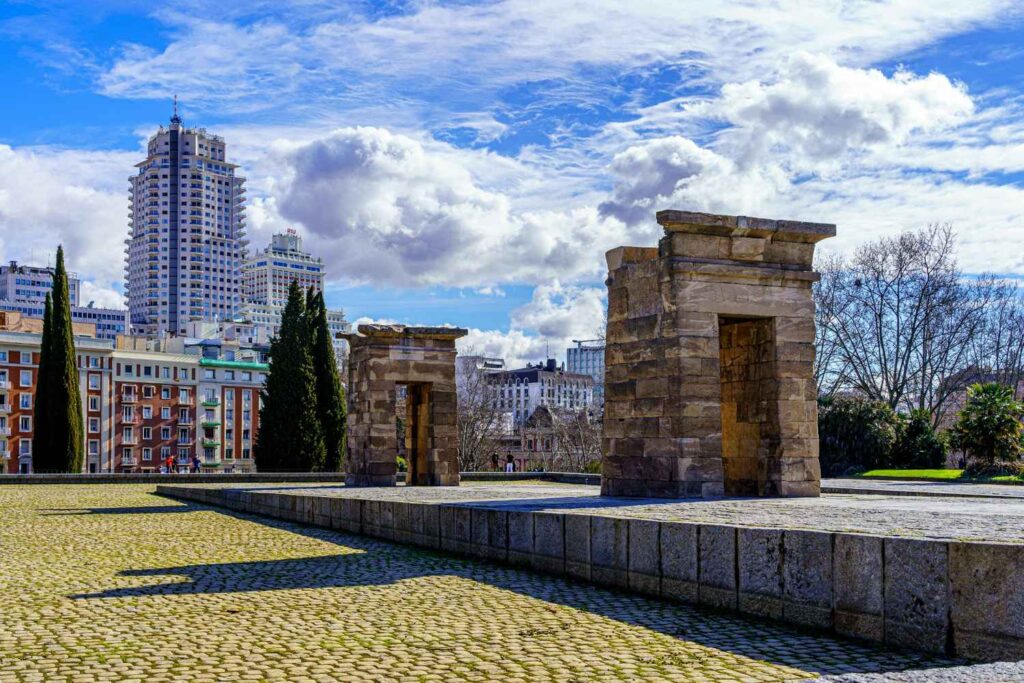
Photo by Esteban Palacios Blanco on Unsplash
Hidden within the beautiful Parque del Oeste in Madrid, the Temple of Debod offers visitors a rare opportunity to explore an authentic piece of ancient Egyptian history outside Egypt itself. This 2,200-year-old sandstone temple was originally built near Aswan to honor the gods Amun and Isis. In the 1960s, when the construction of the Aswan High Dam threatened many historic sites, Spain helped save these treasures. As a gesture of gratitude, the Egyptian government gifted the Temple of Debod to Spain in 1968. Today, it stands as a stunning and peaceful monument that seamlessly blends history, culture, and nature in the heart of Madrid.
🌟 Highlights of the Temple of Debod
🕌 Genuine Ancient Egyptian Architecture and Art
The temple’s design showcases classic Egyptian architectural elements, including massive sandstone blocks, intricately carved hieroglyphics, and detailed reliefs depicting religious rituals and offerings to the gods Isis and Amun. Visitors can walk through original gateways and inner sanctuaries, gaining a vivid sense of ancient Egyptian spirituality and craftsmanship.
🌅 Unmatched Views and Magical Sunset Experiences
Located atop a hill in Parque del Oeste, the temple offers sweeping panoramic views over Madrid’s skyline, including the nearby Royal Palace, Gran Vía, and Casa de Campo park. At sunset, the warm glow reflects off the temple’s stone surfaces and the surrounding water pools, creating one of the city’s most picturesque and romantic scenes — a favorite spot for photographers and locals alike.
🌿 Tranquil Park Setting and Relaxing Atmosphere
Set within the verdant Parque del Oeste, the temple is surrounded by lush gardens, shaded pathways, and serene ponds that enhance its timeless beauty. The park offers benches, picnic spots, and plenty of space to unwind, making it a perfect retreat after a day of sightseeing.
🎟️ Free Admission and Cultural Events
Admission to the Temple of Debod is completely free, welcoming all visitors to experience this ancient marvel without charge. The site occasionally hosts cultural events such as outdoor concerts and exhibitions, providing a lively cultural dimension that enriches the visitor experience.
🚶 How to Get There
• By Metro: The nearest metro station is Príncipe Pío (Lines 6, 10, and R), just a short and scenic walk through the park to the temple entrance.
• By Bus: Multiple bus lines serve stops near Parque del Oeste, making the temple easily accessible from various points in Madrid.
• On Foot: From the Royal Palace or Plaza de España, it’s a leisurely 15-20 minute walk through the city’s historic and green areas.
🕒 Visitor Information
• Opening Hours: Generally open daily from early morning until sunset; hours can vary seasonally, so it’s best to check ahead before your visit.
• Admission: Free for everyone, no tickets required.
• Recommended Visit Duration: Spend 45 minutes to 1 hour to fully explore the temple, walk around the park, and enjoy the views.
💡 Travel Tips
• 📸 Best Time to Visit: Late afternoon and sunset offer the best lighting for photography and a magical ambiance.
• 👟 Comfortable Footwear Recommended: The approach involves gentle slopes and park pathways, so wear comfortable shoes.
• 🌞 Bring Water and Sunscreen: Especially in warmer months, the open park area can get sunny and warm.
• 🎧 Consider a Guided Tour: Some tour companies and local guides offer detailed explanations that bring the temple’s history and symbolism to life.
The Temple of Debod is a unique cultural and historical gem in Madrid, offering a peaceful escape and a direct connection to ancient Egypt. Its authentic architecture, stunning location, and free access make it a must-see for history buffs, art lovers, and anyone seeking a serene spot with unforgettable views. Whether visiting during the day or catching the sunset glow, this ancient monument leaves a lasting impression in the heart of Spain’s bustling capital.
Chueca Neighborhood
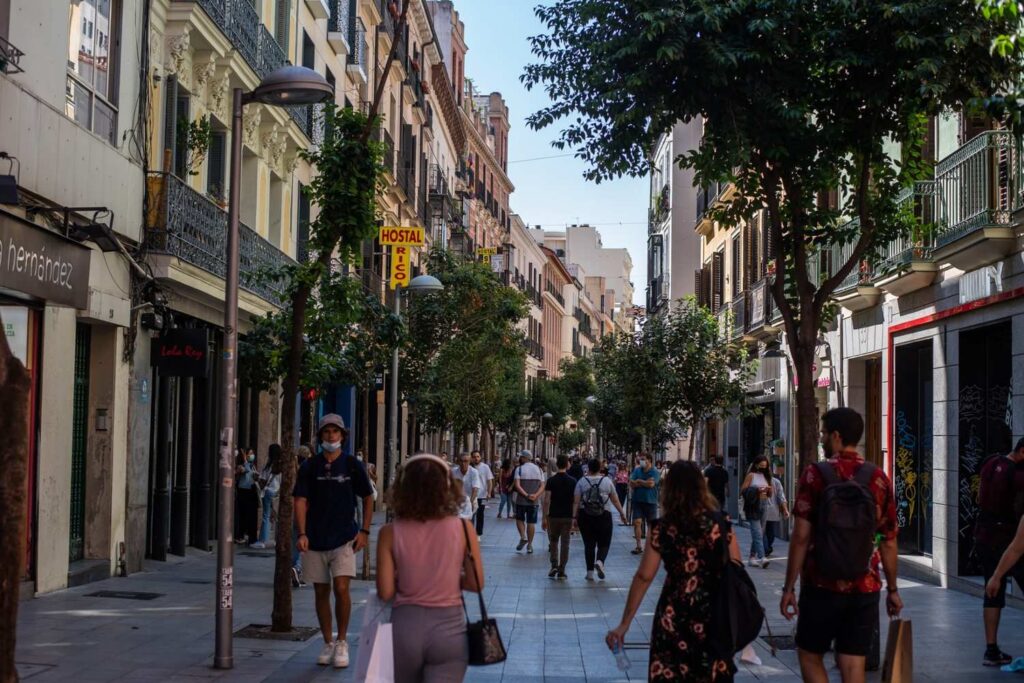
Located in the heart of Madrid, Chueca is one of the city’s most dynamic and colorful neighborhoods. Famous for its lively atmosphere, progressive spirit, and rich cultural scene, Chueca has become a symbol of inclusivity and creativity. Whether you’re exploring its trendy boutiques, enjoying tapas at bustling terraces, or dancing at vibrant nightclubs, Chueca offers an unforgettable experience that blends tradition with modern flair.
🌟 Highlights of Chueca Neighborhood
🎨 Eclectic Art and Boutique Shopping
Chueca is a haven for art lovers and fashion enthusiasts alike. The neighborhood boasts numerous independent galleries, quirky shops, and avant-garde boutiques showcasing local designers, vintage finds, and unique crafts.
🍽️ Gastronomic Delights and Tapas Bars
Foodies will delight in Chueca’s diverse culinary scene, from traditional Spanish tapas bars to innovative fusion restaurants. The lively plazas and streets come alive with outdoor terraces, perfect for savoring delicious dishes while soaking in the vibrant street life.
💃 Electric Nightlife and Entertainment
When the sun sets, Chueca transforms into one of Madrid’s top nightlife destinations. From cozy cocktail lounges to high-energy dance clubs, the neighborhood offers a wide range of options to enjoy music, dancing, and late-night fun.
🚶 How to Get There
• By Metro: Chueca station on Line 5 puts you right in the heart of the neighborhood.
• By Bus: Multiple bus routes serve the area, connecting it with central Madrid and beyond.
• On Foot: Chueca is centrally located and easily accessible on foot from Gran Vía, Plaza Mayor, and Puerta del Sol.
🕒 Visitor Information
• Best Time to Visit: Daytime for shopping and dining; evenings and weekends for nightlife.
• Events: Don’t miss the annual Madrid Pride festival held here each summer, a spectacular celebration drawing visitors worldwide.
• Safety: Chueca is known for being safe and welcoming to all visitors.
💡 Travel Tips
• 📸 Explore the Streets: Wander off the main plazas to discover hidden murals, cozy cafés, and local markets.
• 🥂 Try Local Specialties: Sample traditional dishes like “bocadillo de calamares” (fried calamari sandwich) or enjoy a glass of vermouth on a sunny terrace.
• 🎉 Join the Festivities: If visiting during Pride or other local festivals, immerse yourself in the vibrant community spirit.
Chueca is more than just a neighborhood—it’s a celebration of life, diversity, and culture in Madrid. With its vibrant streets, welcoming spirit, and endless entertainment options, it’s a must-visit for anyone looking to experience the true heartbeat of the city. Whether you’re dining, shopping, or dancing the night away, Chueca leaves a lasting impression of joy and openness.
🗓️ Best Time to Visit Madrid
Madrid shines all year, but some seasons are more traveler-friendly:
- Spring (March to May): Pleasant weather, blooming parks, and outdoor festivals.
- Fall (September to November): Mild temperatures and fewer tourists make this ideal for sightseeing.
- Summer (June to August): Hot and dry, with locals often heading to nearby beaches; evenings are lively.
- Winter (December to February): Cooler but festive, with Christmas markets and decorations.
👉 Best Overall Time: Late spring (April–June) and early fall (September–October) for comfortable weather and vibrant city life.
💶 Currency in Madrid
- Madrid, like all of Spain, uses the Euro (€).
- Credit and debit cards are widely accepted.
- ATMs are plentiful; carrying some cash is useful for markets or small businesses.
- Tipping is customary but modest—around 5–10% in restaurants if service is good.
✈️ Travel Tips for Madrid
- Language: Spanish is the official language. English is spoken in tourist areas.
- Transport: Madrid has an excellent metro and bus network. Walking is also great for city exploration.
- Safety: Madrid is generally safe; stay alert in crowded tourist areas.
- Dining: Dinner starts late, often after 9 PM. Try local dishes like cocido madrileño and tapas.
- Cultural Tips: Embrace the local pace of life—long lunches, late dinners, and lively socializing.
💡 Final Thoughts
Madrid invites you to experience a vibrant mix of history, culture, and modern energy. From masterpieces in world-renowned museums to lively plazas and peaceful parks, the city offers something for every traveler. Dive into Madrid’s rich traditions, savor delicious food, and enjoy the warmth of its people—your unforgettable Spanish adventure starts here.

I’m Shreyash Mhashilkar — a full-stack developer by profession, and a passionate explorer of the future at heart.
With a strong foundation in both front-end and back-end , I spend my days building websites and applications that are not just functional, but scalable, intuitive, and user-focused.

